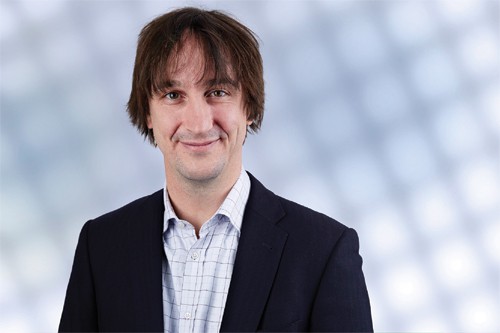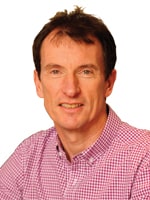
Anton Ussi has an enviable contact book, bulging with academics and key researchers with innovation coursing through their veins. He also has links with companies reaching out for game-changing connections.
As Operations and Finance Director of EATRIS (European Infrastructure of Translational Medicine), the unique nine-nation partnership designed to add sinew to product development, he has the huge task of drawing two often-distant and disparate groupings into orbit.
Facing the challenge of ageing populations and bank-busting chronic illness profiles, EATRIS acts as a match-making crucible, enabling the right project with the right people to meld at the right time.
“It is a sort of speed-dating agency, bringing all the disciplines needed for a project,” he says. “It is essentially about bringing people together.
“The divide between academia and industry has to become a lot smaller and it can if we give the scientists, policy makers and funders the tools so that research can be entered with confidence so that scientists are performing transitional research and not just window dressing.”
The organisation, based in Amsterdam and backed with a “modest, low six-figure budget” from the nine governments, has been some time in the making. It was born in 2008 and has been assiduously building its contact base and getting a feel for institutions, industry and the precious alchemy of cross-border collaboration.
The result is access to 75 research institutions and a growing project base that is gaining muscle and credibility across Europe.
It gained elite European Research Infrastructure Consortium status from the European Union in 2013 and has just staged its second annual conference – Building Bridges in Translational Medicine – where international speakers hailed its approach.
The divide between industry and academia has to become a lot smaller
New partnerships
EATRIS has scored some success with a partnership with Roche to identify potential projects and is a key element of IPROVE, the consortium mandated to supercharge the vaccine innovation chain and steel education programmes to support strained healthcare system budgets in the face of societal time bombs.
Roche is convinced it is a model worth pursuing and Zafrira Avnur, global head of academic collaborations at Roche Partnering, says: “Roche EIN (Extending Innovation Network) forges novel relationships with the world’s leading academic institutions and world class innovators. We facilitate early access to innovation with cost effective and flexible approaches.”
In a display of its global ambition, EATRIS is joining with Cancer Research UK to bring representatives of the US’s National Cancer Institute to a workshop in Brussels in October to share its success.
Navigating the Valley of Death
Ussi is clear that EATRIS should not just be a meeting of minds; it needs to be a confluence of regulatory, legal, marketing and IP expertise with access to patient groups – the elements that can delay or derail projects.
“We are focusing on the early medicine and diagnostic developments you have that can enter the ‘Valley of Death’,” he says. “You go from a fundamental insight on something that is causing a disease and aim to turn that into something that benefits the patients but that pipeline is incredibly precarious, long and risky.
“In the last few years we have seen industry moving away from that early research so the public sector and charities are having to move down into that space whether they like it or not.
“Some groups and institutions do it well, some don’t and don’t know where that expertise is and we are trying to pull together the people who can do it.
“At its heart are university medical centres with access to patients and clinical specialists, tools and high-end technology but we will pull in everyone else who can be involved so we reduce the barriers to multi-disciplinary collaboration – which is the heart of translational research.
“Our primary focus is facilitating transitional research so a client needs to have a product, a patient in mind that they want to serve. We can run with them from after discovery all the way to phase IIa and we can also do diagnostics and vaccines. We are looking for something innovative that will have real benefit for the patient.
“We don’t do ‘me-toos’ or generics, but something new and novel where support is needed, be it biomarker validation or GMP production – we put them in touch with the institutions that can help.”
This sounds good – but does it work? Ussi agrees that EATRIS has to prove its bench to bedside matrix really is an accelerant and he points to early projects that are showing promise.
“The first one we initiated in this matchmaking process was a bio-marker for thyroid cancer,” he adds.
“We met Rosetta Genomics at the June Bio in San Diego last year and they wanted access to independent samples and wanted to know if we could help with the specific technical specifications so we probed the database and two contacts came back. One had the requisite samples and in less than six weeks we went from request to contract being signed. The academic source is in the Czech Republic and the company in Israel so it shows the global potential.
“At the very least, we take some of the pain out of public private collaborating and speed it up a little which can provide a significant gain for the whole pipeline and the patients. We aim to get developments to the patient quicker and cheaper.”
In October the National Cancer Institute will meet with specialists – from clinicians to funders – to determine if its model could work across Europe by uniting talent and resources to improve treatment levels and outcomes.
“This sort of thing really excites me because we can really leverage each others’ assets to create good solutions,” he says.
Further evidence of its intent is its role in the IPROVE vaccines project Ussi adds: “What I like about IPROVE because it is bringing everyone active in the field together to ask what do we need to do to ensure Europe keeps its leading position in vaccines development over the next 20 years, because we have seen a relative reduction investment in vaccines and we are losing that competitive position and the potential scientific output and we have to work really hard to redress that.”
Professor Kate Bushby, Action Research Chair of neuromuscular genetics at Newcastle University, and co-ordinator of the European Joint Action on Rare Diseases, sees potential in rare diseases and says: “There are huge challenges in drug development where the setup of trials is more complicated than for well established specialties so we need people to get more engaged in the issues of trial readiness which we have been working very hard on in recent years,” she says.
“What we see from EATRIS is that it provides an over-arching structure where all these complicated issues around patient identification, research and regulatory affairs can be given a real structure.
“EATRIS talks about having a match.com interface where you can find the services you need and we are interested in increasing the availability of their services to other groups in the rare diseases area.”
Going beyond the project
Creaking industry platforms are the genesis of lots of collaborative initiatives but EATRIS believes core strength comes from its permanent status.
“We are not just a project,” adds Ussi. “Our shareholders are the governments who are saying this is important for our patients; innovation is important for Europe and we want it to happen so we have the good political support underlined with scientific research structures.
“This is definitely for the long haul and we can bring about change. The large consortium model doesn’t work so well – people don’t want to put their precious IP up because of the risk and so you are not getting the best.
This is definitely for the long haul and we can bring about change
“But I definitely sense a lot more willingness on both sides now, particularly because industry is moving away from proprietary research. They know they need close relationships and share their knowledge and expertise while not being afraid of sharing their IP with partners they can trust. Some are very good at it, others are slow and protective and I think it is going to hurt them if they don’t make the most of what is in the heads of academics.”
Ussi, an international business administration graduate and a medical sciences technology transfer specialist, draws a light parallel with his experience which included a stint running a busy restaurant in Frankfurt.
“Running a restaurant for a week is probably a microcosm of a big corporation because it has the same sort of pressures – running a team, deploying resources, advanced planning and it teaches all you need to know about collaborating and getting the best out of people,” he adds.
“This is a people business. If you have committed and dedicated scientists who can deliver on time and you have companies committed to developing a good product then the complementary skills are wonderful.
“It is about getting the right people around the table and ensuring they have the right tools to deliver, that is when it works but that is also where the challenges are because the expectations and priorities can be different. There is the worry that the academic’s blue-sky thinking is heading off at a tangent or that industry is going to kill the project from one day to the next because of changing priorities.
“These are the fears that we can work to dispel but there will also be a difference in how people think.
“Change can be a phenomenally difficult process with a lot of hesitations as you enter new collaborations. It is challenging to understand the outcomes and I do sympathise with organisations going through that process. Organisational cultures are hard to change but we see positivity with people being far more willing to try new things and undertake things together.
“In five years’ time we hope to have a healthy portfolio of truly innovative projects that reflect our way of thinking which is helping funders fund research in a collaborative way and helping academia and industry to work together in effective ways.”





